Shedrubling Monastery, also known as Gongkar Shedrubling Monastery, was built in the 17th century by the Fifth Dalai Lama.
It is one of the “Thirteen Lings” established by the Fifth Dalai Lama and belongs to the Gelug Pa of Tibetan Buddhism.
The “Shedrubling” in the monastery’s name is a Tibetan transliteration, meaning “a place for teaching and practice.”
Located on the Gonggar Gabu Mountain in Gongga County, approximately 22 kilometers from Gonggar County town,
The national highway from Lhasa to Yamdrok Lake passes through the foot of the mountain where the monastery is located.
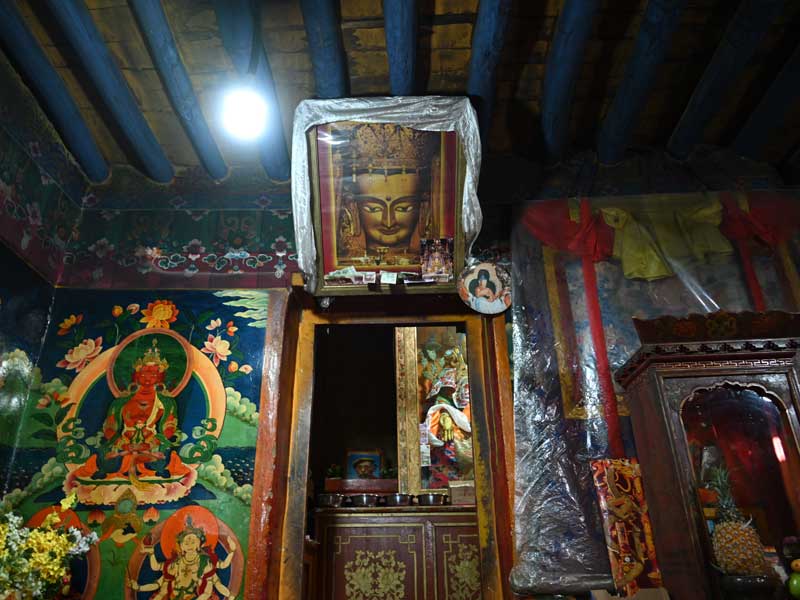
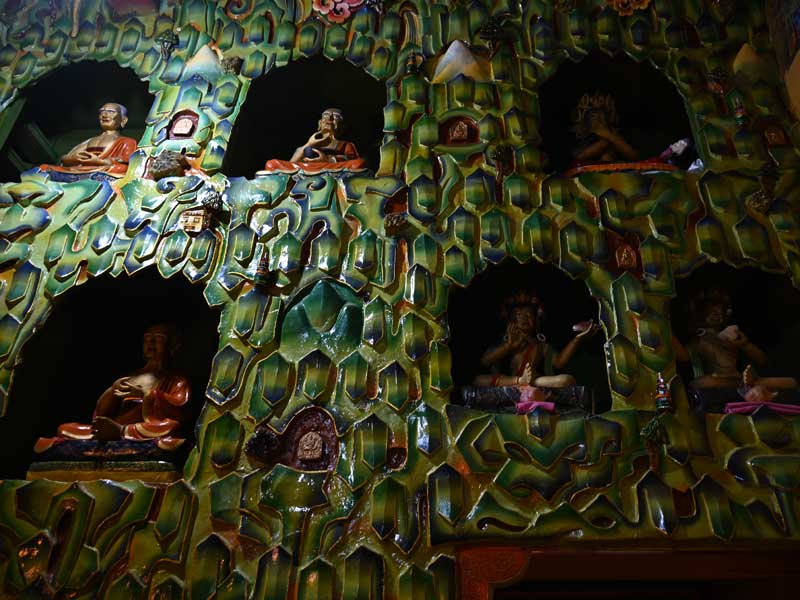
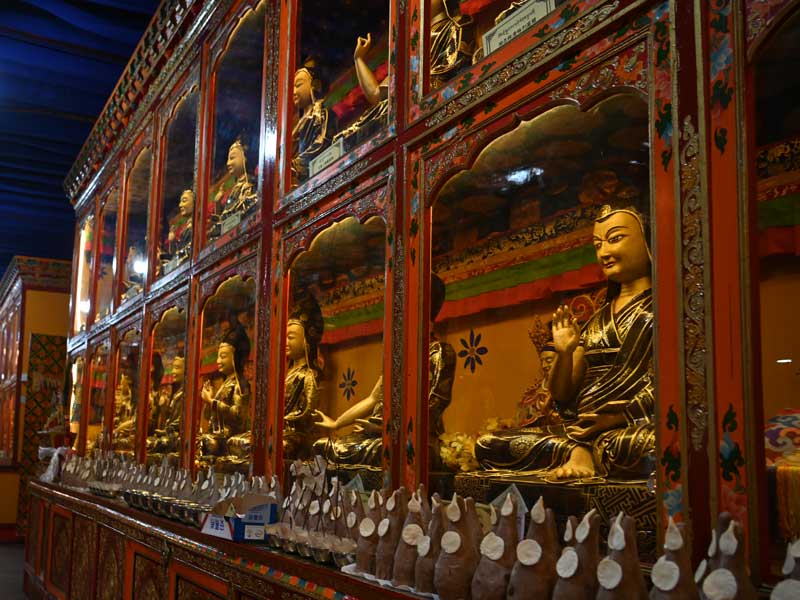
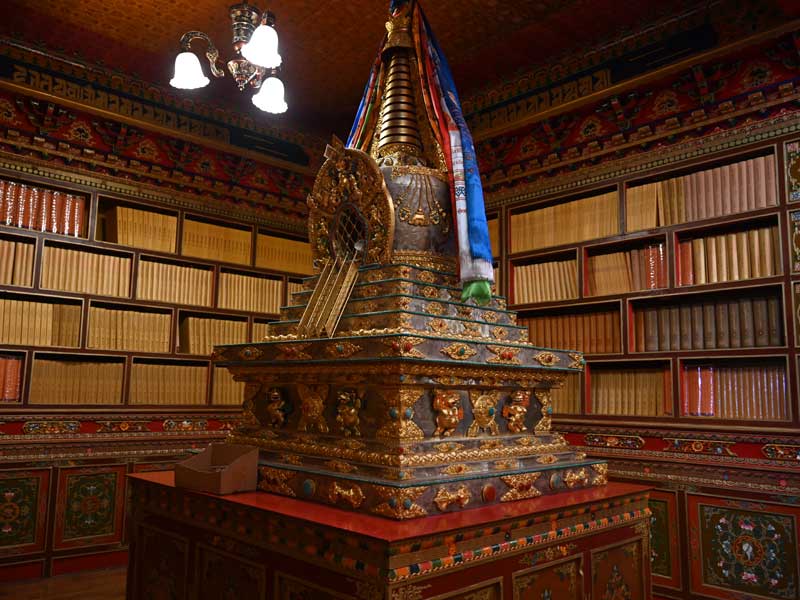
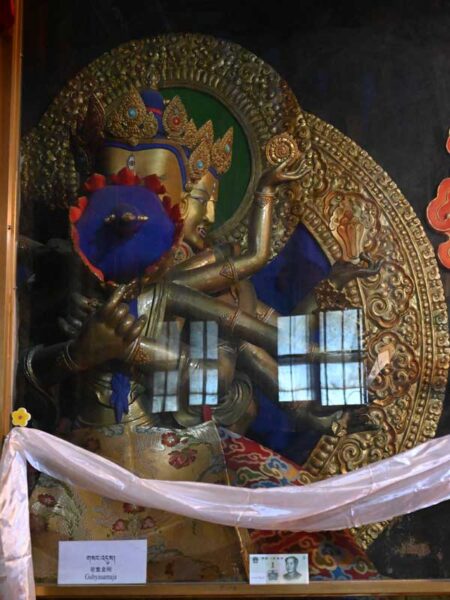
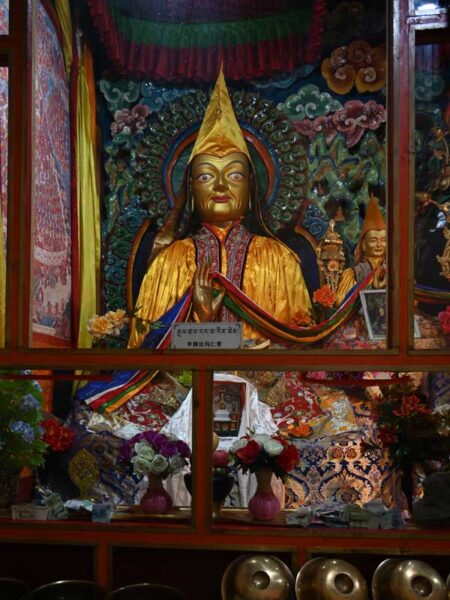
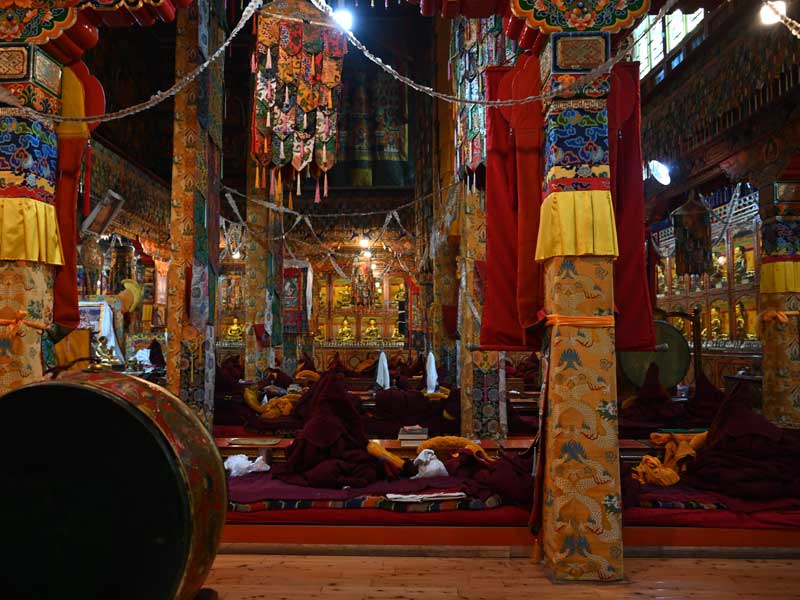
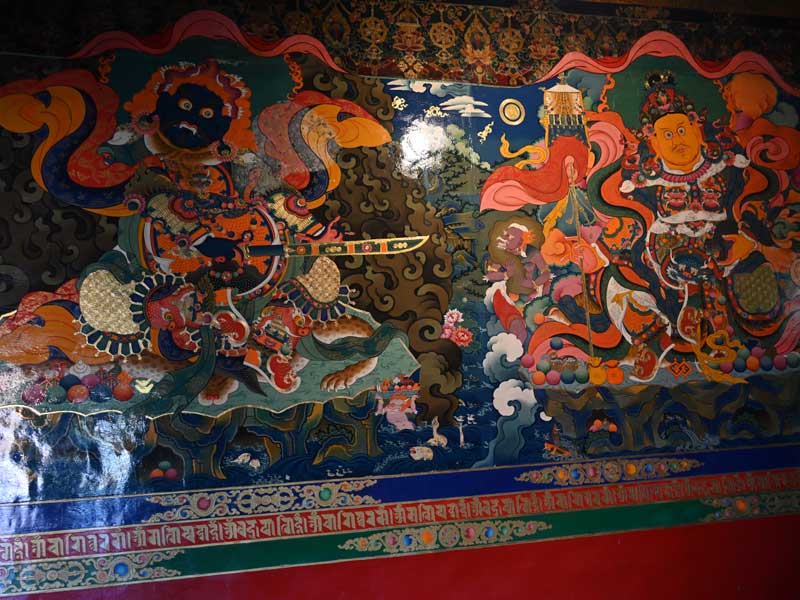
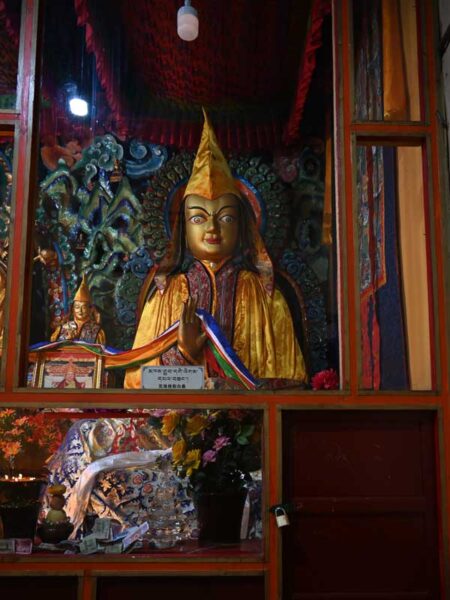
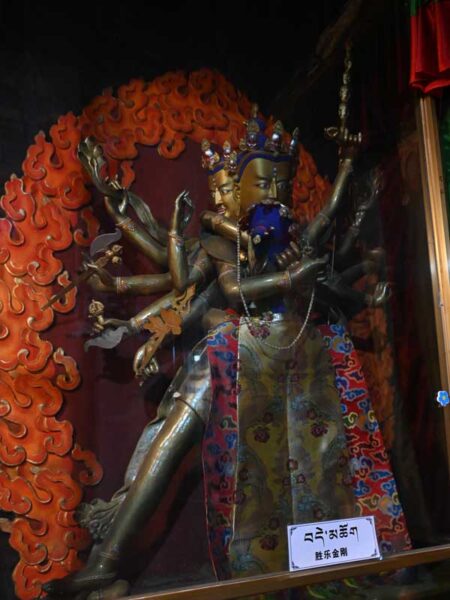
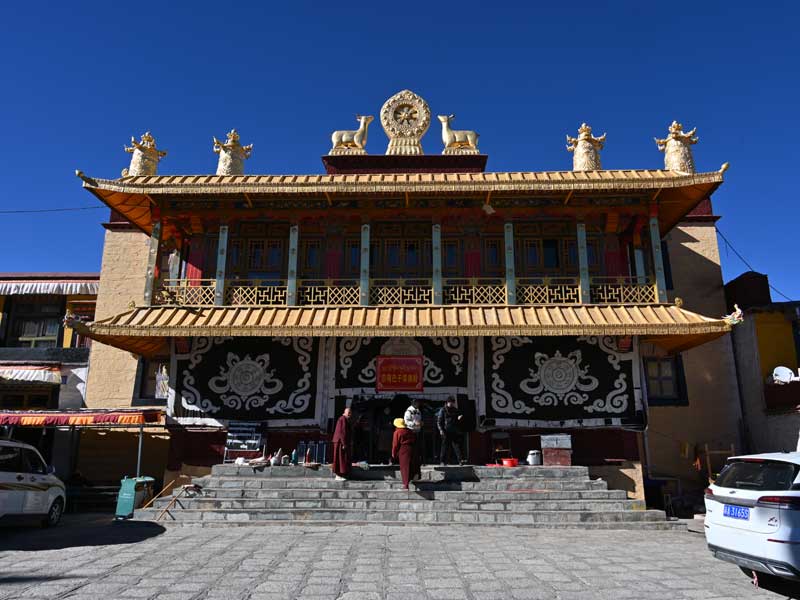
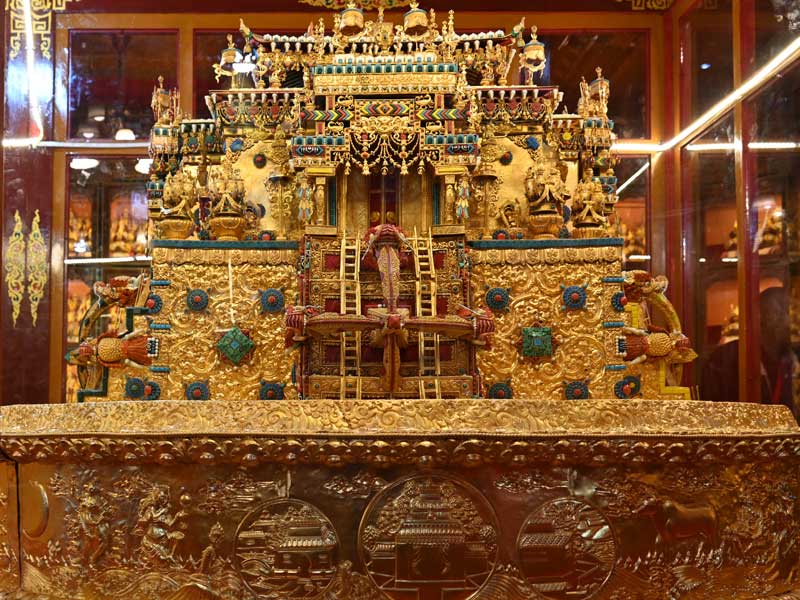
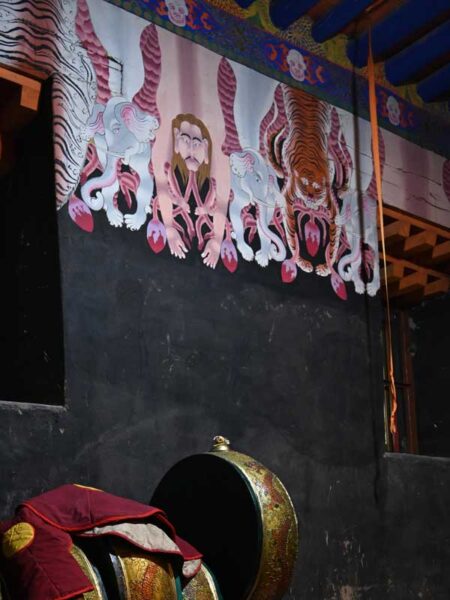
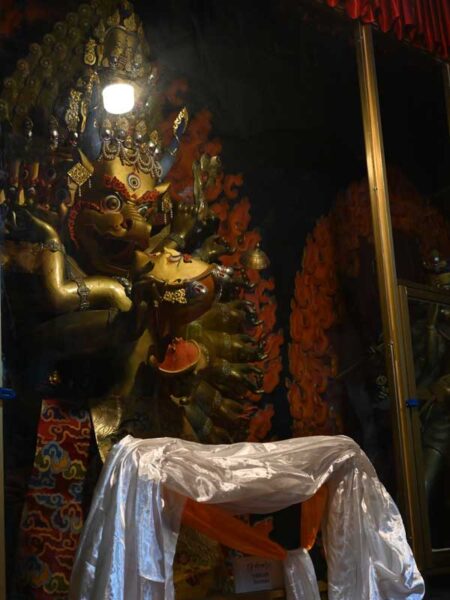
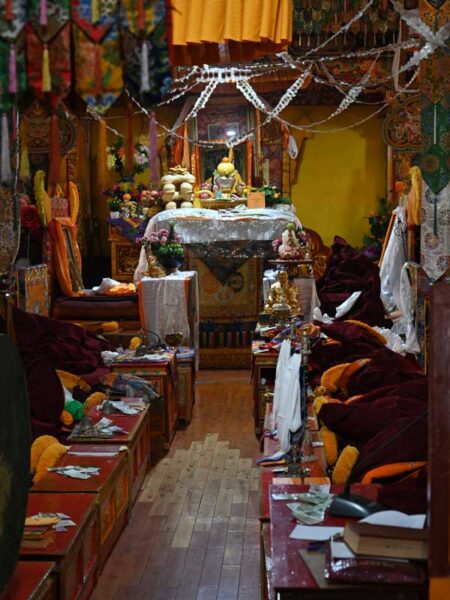
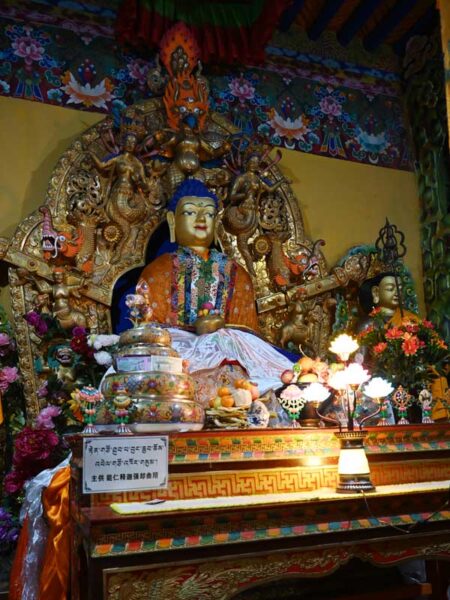
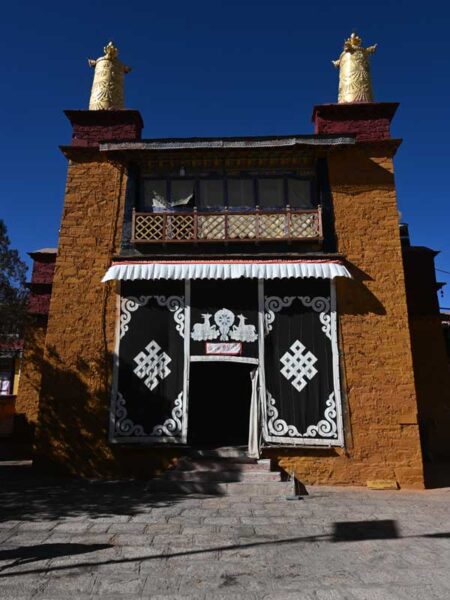
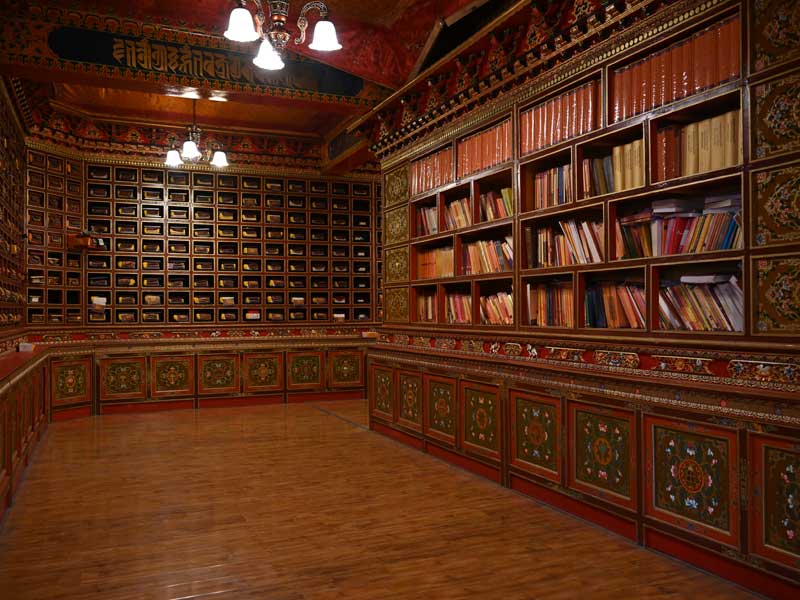
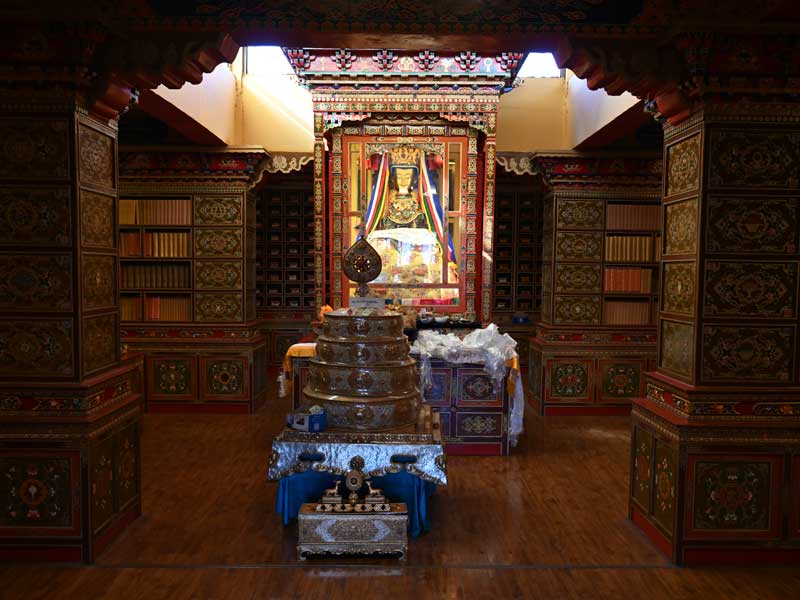
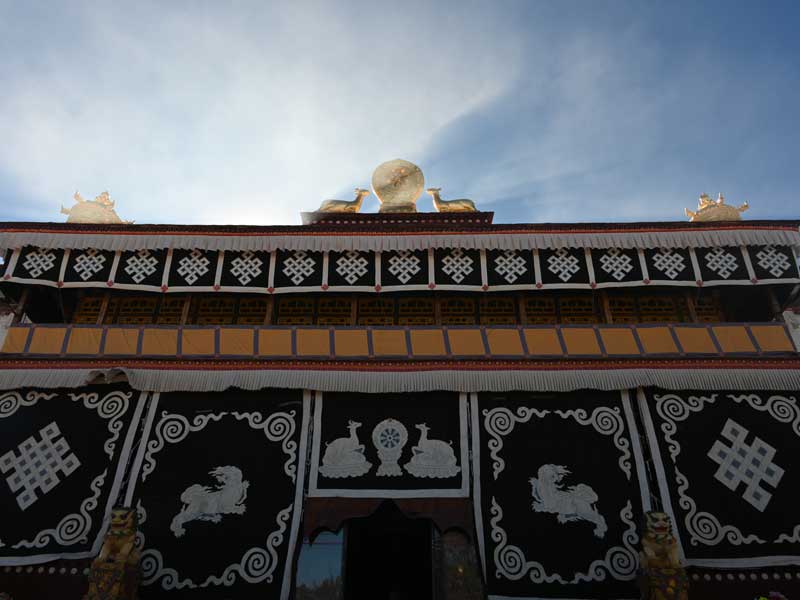
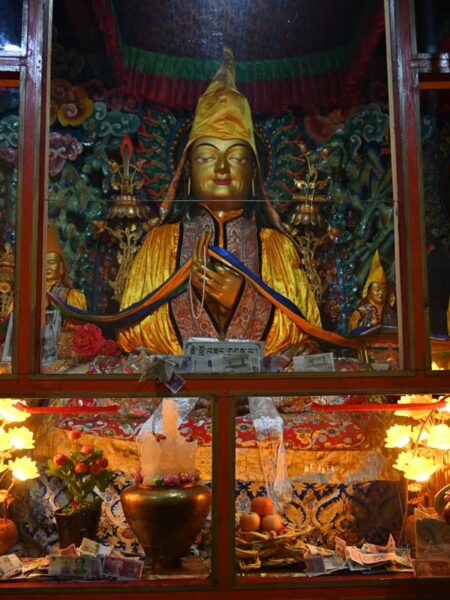
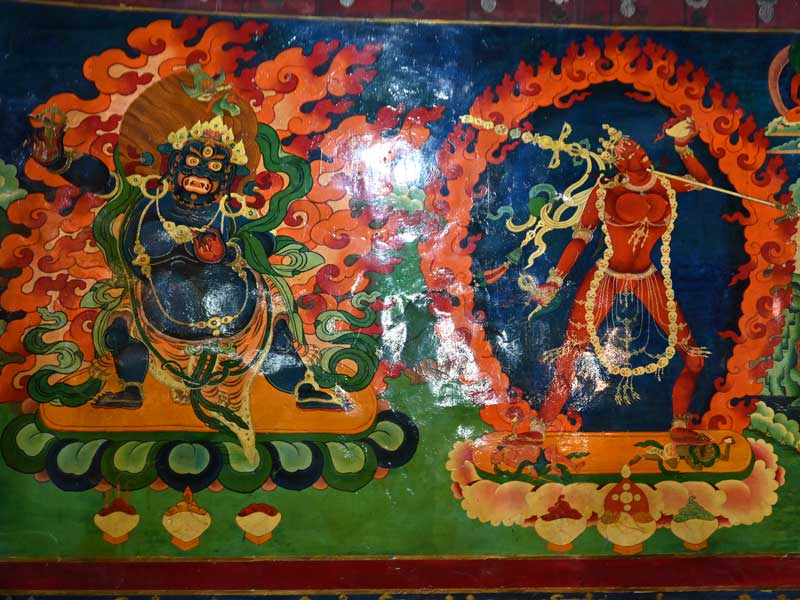
Buildings
Shedrubling Monastery, though not large in size, consists of three main buildings: a library housing a collection of sutras, a main hall, and the throne of the Fifth Dalai Lama.
Upon entering the monastery, the distinction between the old and new buildings are quite apparent.
On the first floor to the left of the entrance, the scripture hall enshrines statues of Master Tsongkhapa and his eight main disciples, three Buddha statues of Master Tsongkhapa and his two disciples,and a thousand small Tsongkhapa statues, as well as the three great Dharma Kings of Tubo Kingdom(Songtsen Gampo,Trisong Detsen, Tritsu Detsen). The second floor of the scripture hall resembles a book depository, containing numerous precious sutras
During the time of the Fifth Dalai Lama, Shedrubling Monastery reached its peak in development, with institutions for Exoteric and Esoteric Buddhism, housing over 500 monks who engaged in Buddhist debates, studies, and practices. The monastery still preserves the throne of the Fifth Dalai Lama to this day.
The original site suffered severe damage during the Cultural Revolution in 1960s. The monastery that stands today was rebuilt in the 1980s by the “Living Buddha of Khyentse” from Sera Monastery, relocating the physical statue of the Paldan Lhamo previously worshiped at the foot of the mountain to the mountaintop for devotees to pay their respects.
The newly constructed main hall of Shedrubling Monastery now houses statues of Jampa Buddha(Maitreya), serving as the main site for the Gelug pa‘s practices.
Paldan Lhamo
“Goddess of Auspiciousness,” transliterated “Paldan Lhamo“, also known as “Maha Kali“, which is one of the female protectors of Tibetan Buddhism (there are many female protectors of Tibetan Buddhism, such as the Five Longevity Sisters, the One-Bun Goddess, etc.). She is the patron saint of Lhasa City and the Dalai Lama. She is the wrathful incarnation of the Hindu goddess Maha Kali in Tibetan Buddhism. In Tibetan Esoteric Buddhism, the Auspicious Heavenly Mother is highly worshiped and has strong influence.
The most renowned aspect of Shedrubling Monastery is the enshrinement of the physical remains of the “Goddess of Auspiciousness”. She passed away around a thousand years ago at the age of twelve, shrinking in size posthumously to only one cubit high. Adorned with a silver crown and colorful garments, her face slightly darkened, with one eye even slightly open.
Following the monastery’s designated “worship direction,” upon entering the small shrine dedicated to her, she is revealed.
As the legend goes, this “Goddess of Auspiciousness” has never been buried and has been worshiped by generations of Tibetans for centuries at Shedrubling Monastery
Legend
There are many legends about Shedrubling Monastery, the most famous being the pagoda enshrining the physical remains of the “Goddess of Auspiciousness”.
Around the year 1042 AD, it is said that the venerable Atisha was invited from India to Tibet to spread the buddhism teachings in the region known as “Guge” today.
Three years later, the venerable traveled to U-Tsang region and near the river in Lhasa, he encountered a young girl who felt deep respect for him. She took off all her gold and silver ornaments and threw them across the river to offer to the venerable; at that time, Atisha was not yet well-known in Tibet, and he was a stranger to the girl as well. When the girl returned home, her parents, upon learning that she had given her precious ornaments to a stranger monk, angrily beat her.
During that era when the Bon religion was prevalent, this young girl was determined to promote the Buddhist teachings and support the monks. Hence, she was treated as a demon by the villagers and thrown into the river, but she floated on the water’s surface, causing fear among the villagers. They then sealed her in a cave on the mountain and smoked her to death.
At that moment, the venerable Atisha manifested his supernatural powers, revealing the transformation of the girl into “Tara” and her rebirth in “Tuṣita” as the “Goddess of Auspiciousness.” He praised the merit of the girl offering her body and life, making people realize that she was a manifestation of the “Goddess of Auspiciousness” protecting Tibetan Buddhism. Consequently, a monastery was built to enshrine the girl’s remains, which later naturally shrank to the size of an elbow and is believed to fulfill wishes.
Due to the various legendary experiences about her, for centuries in Tibetan Buddhism, this Bodhisattva image has been considered the most sacred and spiritual. It is said that her miracles appear everywhere, sometimes taking the form of a woman to help the poor, sometimes appearing as a donor carrying goods on a mule to distribute to the impoverished monks in Tibet, and sometimes manifesting as a divine figure riding a yellow mule flying through the sky. Those who offer wine, food, and other offerings to her image are said to have their prayers answered.



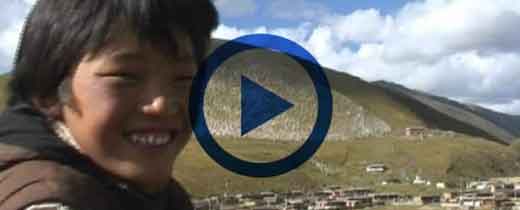

Leave a Reply